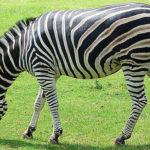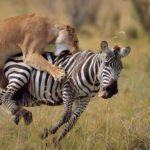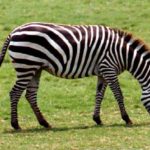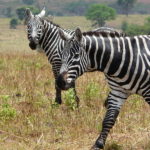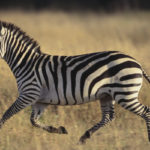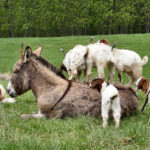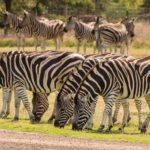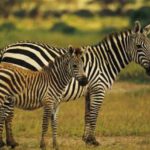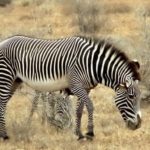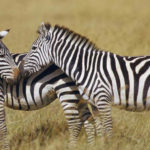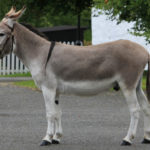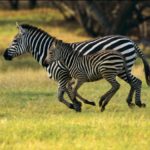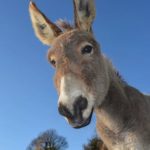Zebras
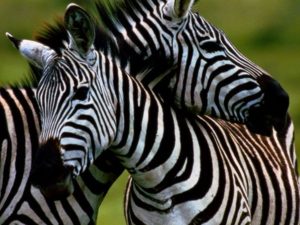 Zebras are a small group of animals from the Order of the Ungainly Ungerned. The closest relatives of zebras are wild donkeys and horses, and more distant are rhinoceroses and tapirs. Now there are three species of zebras, the fourth species – quagga – completely destroyed by man.
Zebras are a small group of animals from the Order of the Ungainly Ungerned. The closest relatives of zebras are wild donkeys and horses, and more distant are rhinoceroses and tapirs. Now there are three species of zebras, the fourth species – quagga – completely destroyed by man.
Being the most primitive representatives of the horse family, zebras combine the characteristics of an ass and a horse. The size of a zebra with a small horse: the height at the withers is 1.2-1.4 m, weight 350 kg. But their legs are not as tall and slender as the horses, the head is relatively large and heavy (especially in the Grave’s zebra), the ears are big and the same donkey’s tail with a tassel. The voice of the zebras is also more like a short cry of an ass. The mane of the zebras is standing. Coloring is contrasting from white and black cross strips covering the entire body. Zebras of different species have differences in color. For example, gravey’s zebra stripes are thin and frequent, do not reach the stomach, and on the back create a black belt.
In the burchell zebra, the broad and rare bands on the belly merge into a black belt. Another of its subspecies – Chapman’s zebras – in the middle of the white stripes there are thin additional bands of brownish color.
All species of zebras live in Africa, among them the Burchell’s zebra is the most massive species and is found everywhere in grassy and shrub savannas. The mountain zebra and the Graveyi zebra live only in southern Africa, and the mountain zebra inhabits mountain plateaus, and the zebra Gravey prefers desert areas with scant vegetation. Zebras are herd animals, the number of individuals in the herd can range from 10 to several hundred. Zebras do not have permanent habitats and wander depending on the location of fresh grass. Especially large-scale migrations are performed by Burchell’s zebras, which often migrate together with wildebeest. Sometimes zebras form mixed herds with wildebeest and ostrich antelopes.
In a herd of zebras, peaceful and peaceful relations prevail. The herd is led by a male, who shows increased vigilance and constantly monitors the situation around. Other members of the herd alternately raise their heads during grazing, not losing sight of the neighborhood. For the expression of friendly feelings, zebras have sign language: they fit together and put their heads on the shoulders or croup of a fellow, and they lightly bite the neck to each other to express tenderness. However, during the pursuit, zebras do not protect their brethren, so an animal that has moved away from the herd risks to be eaten.
Marriage fights are more ritualistic and rarely end in severe trauma. In the harem of each male there are no more than 10-15 females. Pregnancy lasts 13 months.
In general, zebras along with antelope wildebeest make the most massive prey of lions, hyenas, and hyena dogs. Less often they are hunted by leopards and cheetahs. At watering places and during migrations, zebras often become prey to crocodiles. Opposing zebra predators can only speed and hitting with their hind legs, which sometimes they try to fight off the pursuer. In the event that a predator is acting alone, this sometimes works, but in a group attack, zebras are doomed.
People also always hunted zebras. But if the local tribes were unable to undermine the number of myriad herds by single attacks, the European colonists with firearms staged a real massacre. A striking proof is the fate of one of the species of zebras, the quagga, which was completely destroyed (the original number of the species was estimated at several million head!).
